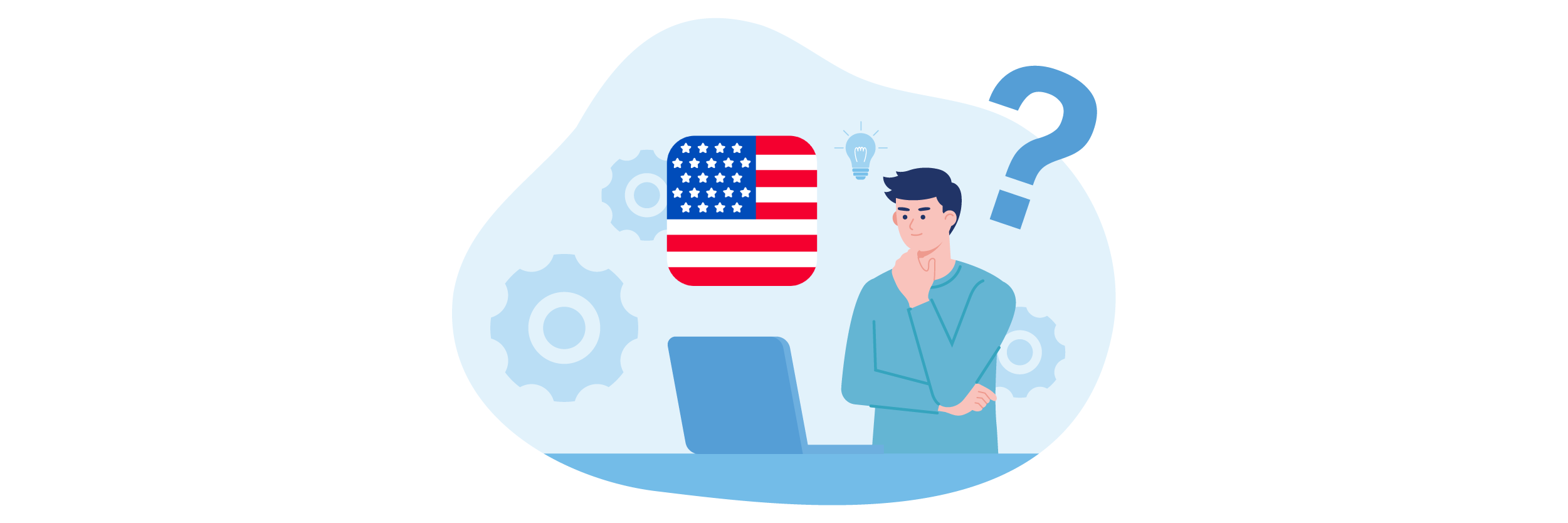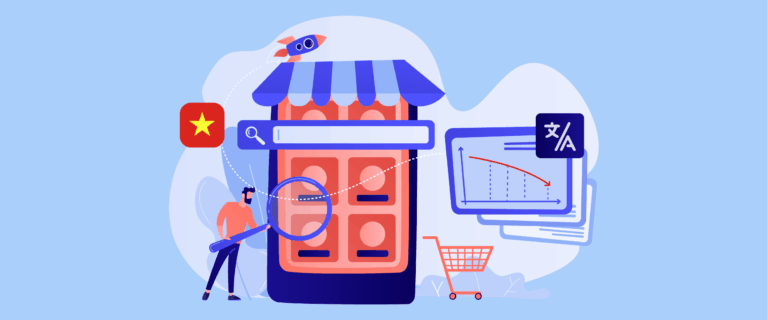Expanding your website into multiple languages is one of the most effective ways to accelerate global growth. As the digital world becomes increasingly multilingual, businesses that invest in localized content are seeing stronger engagement, higher conversions, and broader international visibility. It’s about reaching them in the language they trust.
But with thousands of languages spoken worldwide, how do you choose which ones to prioritize? This article provides a practical framework for identifying high-impact languages based on audience size, digital behavior, and market potential so you can scale strategically and maximize global ROI.
The multilingual advantage: Why is English only not enough?

While English is widely used online, it doesn’t represent the global population. Most internet users today speak other languages and prefer content in their native tongue. Sticking to English-only content may seem convenient, but it’s also one of the biggest barriers to global growth. Here are the key reasons why going multilingual gives your website a real advantage.
- Most internet users aren’t native English speakers: According to Statista, English accounts for less than 20% of global internet users. That means over 80% of users may prefer or rely on content in other languages and are less likely to engage with websites that don’t offer fully localized experiences.
- People trust and buy more from content in their native language: A study by CSA Research surveying 2,430 web consumers across eight countries revealed that 72.4% of consumers are more likely to buy a product when the information is in their language, and 56.2% said that access to information in their language is more important than price. This highlights a strong emotional and practical connection between language and buying behavior, even when consumers understand English.
- You unlock access to growing digital markets: Markets like Latin America, Southeast Asia, and the Middle East are experiencing rapid digital growth, and the dominant languages are Spanish, Indonesian, Arabic, and others.
- Multilingual SEO helps you rank globally: Translating your site doesn’t just help users; it also helps search engines. With localized content, your site can appear in non-English search results, attracting traffic you would otherwise miss.
Going beyond English it’s a strategic move that opens the door to larger audiences and untapped opportunities.
Tier 1 languages — maximum global reach

Languages in the Tier 1 category have the largest global speaker base and contribute significantly to internet traffic. Prioritizing translation into these languages is a strategic move to reach key markets with instant impact. The following are some of the languages included in tier 1 along with the number of speakers according to the latest Statista data for 2025.
English (1,53 billion speakers)
English remains king in the global digital ecosystem. As of February 2025, more than 49.4% of all websites in the world use English as the primary language of their content, making it the most dominant language on the internet. This popularity is strongly supported by countries with the highest number of internet users, such as the United States and India, which are very strong English-speaking markets. With over a billion combined internet users from these two countries, it’s no wonder that most digital information is available in this language.
The widespread use of English also creates a huge advantage in search engine optimization (SEO). Most SEO tools and strategies were first designed for the English-speaking market, giving them a significant technical advantage in indexing, keyword research, and backlink building. Tools like Google Search Console, Ahrefs, and SEMrush all provide the widest coverage for this language.
This means that businesses using English can reach a large market and take advantage of the most mature technology in digital marketing.
Mandarin Chinese (1,184 billion speakers)
Chinese is the second most spoken language in the world by 2025, with around 1.18 billion people according to Statista. However, the share of Chinese web content is still relatively small, only about 1.5% of all global websites. This disparity reflects a huge untapped opportunity, especially considering that China is the world’s largest digital market by number of internet users.
However, China’s market entry strategy requires a unique technical approach. Google is not dominant there, as Baidu is the main search engine with a different algorithm and SEO structure. This means that sites targeted at the Chinese audience need to be locally optimized, from URL structure, meta tags, to server speed in the East Asian region. Not only that, websites need to adapt content for super-app ecosystems such as WeChat, which integrates communication, payment, shopping and social media in one platform.
Digital user habits in China are also very mobile-first, with high interaction through short videos, live shopping, and app-based social e-commerce such as Douyin (China’s version of TikTok) and Xiaohongshu. Therefore, in addition to translation, businesses need to do a thorough localization of design, user interaction, and visual content to match the expectations and habits of local consumers.
Spanish (558,5 million speakers)
Spanish is the most spoken language in the world, with around 558.5 million people in 2025. More than 6% of global websites use Spanish, making it the second most common language on the internet after English. Not only is it spoken in Spain, it is also the official or majority language in more than 20 countries in Latin America, and has a large community of speakers in the United States, with more than 43 million people using it at home by 2023.
Latin America is experiencing rapid growth in the e-commerce sector. Countries such as Mexico, Colombia, Brazil (with Spanish speakers in the border region), and Argentina show a significant surge in online shopping, driven by mobile access and increased internet penetration. The region is, therefore, an ideal target for companies looking to expand their market without having to compete directly in more saturated markets such as the US or Western Europe.
In terms of user behavior, the Spanish-speaking audience is highly active on social media and more responsive to visual and mobile-friendly content. Platforms such as WhatsApp, Instagram, TikTok and Facebook are widely used to search for product information and interact with brands. Therefore, translating and adapting content into Spanish not only improves accessibility, but also strengthens users’ emotional attachment and trust in your brand.
Tier 2 languages — regional powerhouses

Not all languages with global impact have to dominate the entire world. Some languages have a strong influence in specific regions with very promising digital and economic characteristics. Languages in this tier have a high potential to deliver great return on investment (ROI) when used strategically – especially to reach emerging markets with rapid technology adoption and increasing purchasing power.
Arabic (334,8 million speakers)
Arabic has around 334.8 million speakers worldwide and is one of the fastest-growing digital languages. Countries in the MENA region, such as Saudi Arabia, UAE, and Egypt, are showing a significant surge in internet usage and online shopping. According to Statista, around two-thirds of North Africa and West Asia’s population is connected to the internet, with rapid growth in the mobile commerce and fintech sectors.
The region is also known for being home to rich oil and gas-based economies, which means consumer spending power is high. Countries like the UAE and Qatar have high GDP per capita and a digitally active middle class. This makes Arabic content a strategic avenue to reach audiences with huge spending potential, especially in the luxury, travel, education, and digital products sectors.
However, to enter the Arabic market, technical challenges need to be considered: Arabic uses a right-to-left (RTL) writing system. This has an impact on website layout, navigation and rendering – so your site needs to support RTL structures and appropriate local fonts for an optimal user experience.
Hindi (609,1 million speakers)
Hindi is now spoken by around 609 million people worldwide. India, as a tremendous digital growth center, has undergone an internet revolution in the last decade. With over 850 million internet users and massive smartphone adoption, the country is an ideal market for content-based expansion. The use of Hindi in local apps, media and e-commerce is increasing significantly as the majority of the population feels more comfortable interacting in their native language.
Interestingly, while English is also widely spoken in India, dual-language interfaces are becoming the new standard for digital platforms. This means that even if you already have content in English, adding a Hindi version will increase reach and emotional closeness with local users. This strategy is particularly effective for sectors such as e-learning, financial services, FMCG products, and community-based platforms.
The Indian market is also known for its mobile-first characteristics. Most users access the internet from mobile phones, and local payment methods such as UPI (Unified Payments Interface) are becoming the standard for digital transactions. Therefore, Hindi content optimized for mobile devices and tailored to local preferences can deliver much stronger results than relying solely on English.
Portuguese (266,6 million speakers)
Portuguese has around 266.6 million speakers globally and is the main language in Brazil. It is also used by 3.8% of websites worldwide. Brazil has seen significant growth in the digital sector in recent years, with e-commerce transactions expected to reach over USD 70 billion by 2025. The population is highly digitally active, with internet penetration rates exceeding 80%, making Portuguese content strategically necessary to reach engaged and responsive customers.
Beyond Brazil, Portuguese is also spoken in African countries such as Angola and Mozambique, which are experiencing growth in technology and connectivity. This opens up unique expansion opportunities for companies looking to establish a presence in unsaturated African markets.
The tech and startup sector in Brazil is also showing rapid growth, especially in edtech, fintech, and health tech. Translating content into Portuguese is therefore relevant for e-commerce and essential for SaaS, mobile app, and digital service companies looking to expand in the South American and African tech ecosystems.
Tier 3 languages — specialized high-value markets

Languages in this tier may not have as many speakers as other global languages, but they have high economic and strategic value. They are typically used in markets with strong purchasing power, strict regulatory standards, or very specific consumption habits. Entering these markets requires careful adaptation, but the return can be huge, especially in B2B, high-tech ,and premium markets.
German (134 million speakers)
According to the Berlitz, German has around 134.6 million speakers globally and is the main language in the countries with the highest purchasing power in Europe, such as Germany, Austria and Switzerland. The German economy is a manufacturing and industrial technology powerhouse, making the language particularly important in the B2B, industrial machinery, automotive and engineering sectors. Companies operating in these sectors would benefit greatly from providing technical content and documentation in German.
In addition, German-speaking countries are known for their strict regulations on personal data protection and digital security. GDPR (General Data Protection Regulation) compliance is a legal requirement and an expectation of privacy-conscious consumers. Therefore, German websites must convey clear information about data, cookies and security policies in appropriate and reliable legal language.
The German market also highly trusts local and international brands that use their native language. Even in professional or technical contexts, the use of German is valued more than just translating the front page.
French (311,9 million speakers)
French is spoken by around 311.9 million people worldwide and is an official language in more than 29 countries across Europe, Africa, the Caribbean, and the Pacific. It plays an important role in many countries with diverse economic profiles, ranging from France and Belgium to Canada (Quebec region) and several African countries such as Senegal, Ivory Coast, and Congo. This makes French a strategic link for expansion across continents.
In Africa, the French-speaking market is growing rapidly, driven by young demographics and increased internet penetration. With an increasingly digital-savvy young population, these countries show great potential in e-learning, fintech and mobile commerce. Serving French-speaking audiences in Africa also means paving the way to markets that are still less competitive but promising long-term growth.
Economic factors aside, French-speaking communities generally care deeply about preserving their language and culture. Even in a multilingual country like Canada, the consistent use of French is considered a form of respect for local identity.
Japanese (126 million speakers)
Japanese has around 126 million speakers, mostly from Japan, a country with a high level of technology and a highly educated consumer society. Japan is known as an early adopter market in technology, consumer electronics, automotive, and gaming. For global companies working in innovative fields, providing Japanese-language content can reach an audience that values precision, quality, and innovation.
In addition, the Japanese market has a high tolerance for premium prices, as long as the quality and credibility of the product can be proven. Japanese consumers also tend to do thorough research before buying. In many cases, approaches that are too global or generic fail to meet the expectations of the Japanese market.
However, the Japanese language has a complex writing system – combining kanji, hiragana and katakana – which requires a specialized translation approach. In addition to linguistic aspects, Japanese sentence structure and politeness norms are highly contextualized. Therefore, only by using expert translators and a well-thought-out localization strategy can brands appear authentic and effective in the eyes of Japanese consumers.
Emerging opportunity languages

Not every multilingual expansion strategy has to start with the major global languages. Several high-potential languages are often overlooked — despite having large audiences and rapidly growing digital markets. Here are a few of them.
Russian (253.4 million speakers)
Russian is spoken by around 253 million people worldwide. It is the official language in Russia, Belarus, and Kazakhstan and is widely used across Eastern Europe and Central Asia. Although various geopolitical challenges and sanctions have hit Russia’s digital economy, its domestic tech sector is now striving to rebuild a self-sufficient ecosystem, including local search engines, e-commerce platforms, and social media apps like VK and Yandex.
With the increased use of local platforms and a governmental push for digital sovereignty, Russian-language content remains highly relevant—especially for tapping into the large domestic market and its global diaspora. However, content strategies targeting this market must account for shifting censorship policies, local platform preferences, and technical support for the Cyrillic script to stay competitive and culturally appropriate.
Indonesian (252.4 million speakers)
Indonesian is spoken by over 252 million people and is the national language of the world’s fourth most populous country. Indonesia is a rising internet market in Southeast Asia, with over 212 million internet users as of early 2025 and steadily growing digital adoption. Its local startup and e-commerce ecosystem is expanding rapidly, fueled by high smartphone usage and a young, digitally active population.
As the official language used across regions and ethnic groups, Indonesian allows brands to reach a broad audience with a standardized approach. Additionally, its mobile-first nature and high social media engagement make Indonesian-language content strategies especially effective for customer acquisition and brand engagement.
Indonesia’s market is also increasingly open to global products, particularly in fashion, technology, education, and digital entertainment. However, to earn trust and attention from local audiences, using natural-sounding, culturally adapted Indonesian—not literal translations—is key.
Bengali (284.3 million speakers)
Bengali is spoken by over 284 million people, making it one of the most widely spoken languages in the world. It is commonly used in Bangladesh and parts of India, particularly in the state of West Bengal. With strong digital economic growth—especially in education, fintech, and digital media—Bengali-speaking regions offer significant opportunities for market penetration through localized content.
Bangladesh has seen a surge in internet and mobile device adoption, with a young digital population increasingly active on platforms like YouTube, Facebook, and local apps. In India, the Bengali community holds a strong cultural and linguistic identity, so content strategies in Bengali can build deeper connections than relying solely on national languages like Hindi or English.
While competition in Bengali-speaking markets is not as intense as in other regions, this is the right time to enter. With the right localization approach—in language, cultural context, and digital distribution—your brand can establish loyalty in this growing market before it becomes saturated.
Market entry strategy by language

Translating a website into multiple languages is a crucial part of any market expansion strategy and requires careful planning. Each language demands a unique approach depending on the technical, cultural, and behavioral characteristics of its target market. To maximize impact and minimize risk, developing a phased market entry strategy that accounts for technical readiness and cultural sensitivity is essential.
Phased rollout recommendations
Instead of launching all language versions simultaneously, a phased rollout strategy allows you to test performance and audience response in a controlled manner. You can begin with Tier 1 languages such as English or Spanish to access the largest markets, then gradually expand into regional languages like Hindi or Arabic. This phased approach gives your team time to optimize content, evaluate performance metrics, and refine the experience based on user feedback.
This approach also enables more efficient resource allocation—whether in translation costs, local talent, or technical support. By prioritizing languages with higher ROI potential, you can secure early growth while laying the groundwork for long-term multilingual expansion.
Technical requirements by script type
Each language comes with its own writing system and script requirements, making it vital to ensure your platform supports various character types and text directions. For example, languages like Arabic and Hebrew use RTL (right-to-left) formatting, which requires restructured page layouts, navigation, and design elements. Meanwhile, Mandarin and Japanese need special fonts and support for complex non-Latin characters.
Failing to accommodate these technical needs can lead to broken layouts, poor user experience, and device compatibility issues. Ensure your CMS and frameworks support UTF-8 encoding, flexible layouts, and modular content structures adaptable to different scripts. This ensures each language version performs optimally in both functionality and usability.
Cultural adaptation beyond translation
Literal translation alone isn’t enough to build authentic connections with users across cultures. Cultural adaptation involves rewriting messages, adjusting tone, visuals, and even calls-to-action (CTAs) to align with local audiences’ values, habits, and expectations. For example, colors, symbols, or humor that work well in the U.S. might be ineffective or even offensive in Japan or the Middle East.
This adaptation also extends to economic and social aspects—such as adjusting pricing, payment methods, promotional calendars, or using localized testimonials. By involving native speakers and cultural experts in the process, you go beyond translation to build trust and engagement with your audience.
Language selection matrix

Choosing the right languages for expansion should align with your business goals and readiness for technical implementation. In this section, you’ll learn how to map language choices based on strategic value and set clear expansion priorities in a structured way.
Evaluating language tiers based on ROI potential
Each language has a different translation ROI profile depending on market size, purchasing power, and competition level. For example, English may involve higher translation costs and SEO competition, but it offers broad reach and robust tool support. In contrast, languages like Bengali or Indonesian may be more affordable and target fast-growing markets, though conversions might take longer to materialize.
This matrix also helps you evaluate the trade-offs between global exposure and long-term opportunity. Tier 1 languages are ideal for brands aiming for fast global awareness, while Tier 2 and 3 languages can offer strategic growth with lower risks. A careful ROI assessment will allow your team to allocate resources effectively without overspending on markets misaligned with your product.
Aligning language choices with business objectives
Your language strategy should reflect your brand’s vision and priorities. If you aim to boost online sales, languages with high e-commerce penetration—like Spanish or Portuguese—should take precedence. On the other hand, if your focus is brand reputation or B2B growth, premium markets like Germany or Japan may be more relevant. Language choices should also match your target demographics—whether they are young, tech-savvy, or more conservative digital consumers.
Aligning languages with business objectives also clarifies your key success metrics. For instance, if user loyalty is the goal, translation quality and cultural nuance must be prioritized. If your target is organic traffic growth, local keyword research and multilingual SEO efforts should take center stage.
Roadmap recommendations for multilingual implementation
Building a realistic roadmap for multilingual implementation starts with grouping language priorities and preparing the technical infrastructure, team workflows, and content. Ideally, begin with one or two Tier 1 languages and expand to Tier 2 once initial results are validated. Your roadmap should account for time allocated to local keyword research, linguistic QA, UX testing, and internal training for multilingual customer support.
A good roadmap also considers scalability. Use content management systems (CMS) and translation tools that allow easy language additions without disrupting your site’s structure. Set clear evaluation checkpoints to assess the performance of each language version so you can accelerate or delay expansion based on real-world data.
Simplifying multilingual expansion with automated translation

Managing multilingual expansion often sounds complex, from selecting languages to translating content, and ensuring SEO works optimally across all site versions. However, an automated translation like Linguise can simplify the entire process without compromising quality. Linguise supports over 80 languages, including those in Tiers 1, 2, and 3, and additional options you may not have considered.
Beyond instant translation, Linguise offers a live editor feature that lets you review and adjust translations directly on your site. Maintaining context and ensuring the tone fits your local audience is crucial. Linguise supports multilingual SEO implementation, from hreflang tags and metadata to language-specific URLs.
With a lightweight system compatible with CMS platforms like WordPress, Joomla, and various e-commerce systems, Linguise is the ideal solution for businesses aiming to expand globally without heavy technical burdens. Whether starting with one language or planning to reach multiple audiences, Linguise helps you do it quickly, accurately, and efficiently.
Conclusion
Choosing the right language is key to effectively reaching a global audience. Each language, from Tier 1 to languages with new potential, brings unique opportunities that can be tailored to your business goals.
To simplify this process, Linguise offers an automated translation that supports all major languages, with features such as a live editor and multilingual SEO. This solution enables fast, efficient and quality multilingual expansion.




